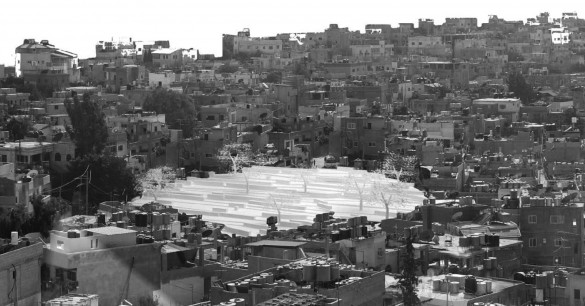Extracts from “Acts of Return: Spatial Interventions in Palestinian Refugee Camps and Former Villages”
by Bert Ruelens

The Palestinian refugee camps exist as extraterritorial islands throughout Jordan, Syria, Lebanon and the Palestinian territories.

Yet today a new form of spatial agency has taken hold in the camp, harnessing the built environment instead as a vehicle for social empowerment.
The architecture of the camp was cast as an indelible monument to ‘temporariness’, with the everyday hardship of its inhabitants standing as a material endorsement of the ‘right of return’.

This project imagines another phase of this transformation as it might coincide with a heightening of the processes of return. In an environment where the camp reaches a state of obsolescence, or is forced to renegotiate its relationship with the surrounding territory, how might the urban fabric respond? And what traces of exile might remain?

(Content published on arenaofspeculation.org with permission from the author.)
